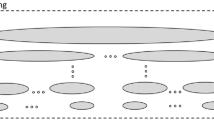Abstract
Writing clear and unambiguous requirements that are conflict-free and complete is no easy task. Incorrect requirements lead to errors being introduced early in the design process. The longer the gap between error introduction and error discovery, the higher the cost associated with the error. To address the growing cost of system development, we introduce a tool called Analysis of Semantic Specifications and Efficient generation of Requirements-based Tests (ASSERT™) for capturing requirements, backed by a formal requirements analysis engine. ASSERT also automatically generates a complete set of requirements-based test cases. The requirements are captured in a structured natural language that is both human- and machine-readable. Formal analysis of these requirements with an automated theorem prover identifies errors as soon as requirements are written. It also addresses the historical problem that analysis engines are hard to use and understand for someone without formal methods expertise and analysis results are often difficult for the end-user to understand and make actionable. ASSERT’s major contribution is to bring powerful requirements capture and analysis capability to the domain of the end-user. We provide explainable and automated formal analysis, something we found important for a tool’s adoptability in industry. Automating test case generation in ASSERT also provides clear and measurable productivity gains in system development.














Similar content being viewed by others
References
Siu K, Moitra A, Durling M, Crapo A, Li M, Yu H, Herencia-zapana H, Castillo-Effen M, Sen S, McMillan C, Manolios P (2017) Flight critical software and systems development using ASSERT™. In: IEEE/AIAA 36th digital avionics systems conference (DASC), St. Petersburg, FL, USA
Crapo A, Moitra A, McMillan C, Russell D (2017) Requirements capture and analysis in ASSERT™. In: IEEE 25th international requirements engineering conference (RE), Lisbon, Portugal
Moitra A, Siu K, Crapo AW, Chamarti H, Durling M, Li M, Yu H, Manolios P, Meiners M (2018) Towards development of complete and conflict-free requirements. In: IEEE 26th international requirements engineering conference (RE), Banff, Canada
McMillan C, Crapo A, Durling M, Li M, Moitra A, Manolios P, Stephens M, Russell D (2019) Increasing development assurance for system and software development with validation and verification using ASSERT™. In: SAE technical paper no. 2019-01-1370
RTCA (2011) DO-178C software considerations in airborne systems and equipment certification 12/13/2011
Owre S, Rushby J, Shankar N (1992) PVS: a prototype verification system. In: International conference on automated deduction, Springer, Berlin
PVS: property verification system. http://www.csl.sri.com/projects/pvs. Accessed 3 May 2019
Heimdahl MPK, Czerny BJ (1996) Using PVS to analyze hierarchical state-based requirements for completeness and consistency. In: IEEE high-assurance systems engineering workshop (Cat. No. 96TB100076)
Owre S, Rushby J, Shankar N (1995) Analyzing tabular and state-transition requirements specifications in PVS. In: Proceedings of TACAS
Rayadurgam S, Joshi A, Heimdahl M (2003) Using PVS to prove properties of systems modelled in a synchronous dataflow language. In: International conference on formal engineering methods
Leveson N, Heimdahl M, Hildreth H, Reese J (1994) Requirements specification for process-control systems. In: IEEE transaction on software engineering
Leveson N, Heimdahl M, Reese J (1999) Designing specification languages for process control systems: lessons learned and steps to the future. In: Nierstrasz O, Lemoine M (eds) Software engineering—ESEC/FSE’99. Lecture notes in computer science, vol 1687, Springer, Berlin
Easterbrook S, Lutz R, Covington R, Kelly J, Ampo Y, Hamilton D (1998) Experiences using lightweight formal methods for requirements modeling. IEEE Trans Softw Eng 24(1):4–14
Holtzmann GJ, Lieberman WS (1991) Design and validation of computer protocols. Prentice Hall, Englewood Cliffs
Berry D (1999) Formal methods: the very idea, some thought about why they work when they work. Electron Notes Theor Comput Sci 25:10–22
Nuseibeh B, Easterbrook S (2000) Requirements engineering: a roadmap. In: Proceedings of the conference on the future of software engineering, ACM
Mavin A, Wilkinson P, Harwood A, Novak M (2009) Easy approach to requirements syntax (EARS). In: 17th IEEE international requirements engineering conference, Atlanta, USA
Mavin A, Wilkinson P, Gregory S, Uusitalo E (2016) Listens learned (8 lessons learned applying EARS). In: IEEE 24th international requirements engineering conference, Beijing, China
Badger J, Throop D, Claunch C (2014) VARED verification and analysis of requirements and early designs. In: IEEE 22nd requirements engineering conference, Karlskrona, Sweden
Gross K, Fifarek A, Hoffman J (2016) Incremental formal methods based design approach demonstrated on a coupled tank control system. In: IEEE 17th international symposium on high assurance systems engineering
GitHub SpeAR. https://github.com/lgwagner/SpeAR. Accessed 3 May 2019
Feiler PH, Gluch DP, Hudak JJ (2006) The architecture analysis and design language (AADL): an introduction (no. CMU/SEI-2006-TN-011). Carnegie-Mellon Univ Pittsburgh PA Software Engineering Inst
Brat G, Bushnell D, Davies M, Giannakopoulou D, Howar F, Kahsai T (2015) Verifying the safety of a flight-critical system. In: International symposium on formal methods, Springer, Cham
W3C: Semantic Web Standards. Web Ontology Language (OWL). https://www.w3.org/OWL/. Accessed 3 May 2019
Crapo A, Moitra A (2019) Using OWL ontologies as a domain-specific language for capturing requirements for formal analysis and test case generation. In: International conference on semantic computing, Newport Beach
Whalen M, Gacek A, Cofer D, Murugesan A, Heimdahl M, Rayadurgam S (2013) Your “what” is my “how”: iteration and hierarchy in system design. IEEE software, vol 30, no 2
Some Famous Unit Conversion Errors. https://spacemath.gsfc.nasa.gov/weekly/6Page53.pdf. Accessed 3 May 2019
Nuseibeh B (1997) Ariane 5: who dunnit? IEEE Softw 14(3):15–16
Litt J, Simon D, Garg S, Guo TH, Mercer C, Millar R, Behbahani A, Bajwa A, Jensen DT (2004) A survey of intelligent control and health management technologies for aircraft propulsion systems. JACIC 1(12):543–563
Semantic Application Design Language (SADL). http://sadl.sourceforge.net/index.html. Accessed 3 May 2019
Crapo A, Moitra A (2013) Toward a unified English-like representation of semantic models, data, and graph patterns for subject matter experts. Int J Semant Comput 7(3):215–236
Laprie JC, Arlat J, Beounes C, Kanoun K (1990) Definition and analysis of hardware- and software-fault-tolerant architectures. Computer 23(7):39–51
IBM Rational DOORS. https://www.ibm.com/us-en/marketplace/rational-doors. Accessed 3 May 2019
Manolios P (2017) Scalable methods for analyzing formalized requirements and localizing errors. Patent 9,639,450, 2 May 2017
Chamarthi HR, Dillinger PC, Manolios P, Vroon D (2011) The ACL2 Sedan theorem proving system. In: TACAS, Springer
Manolios P, Vroon D (2006) Termination analysis with calling context graphs. In: Computer aided verification (CAV). Lecture notes in computer science, Springer, vol 4144, pp 401–414
Manolios P, Vroon D (2010) Interactive termination proofs using termination cores. In: Interactive theorem proving, lecture notes in computer science, Springer, vol 6172
Chamarthi HR, Dillinger PC, Kaufmann M, Manolios P (2011) Integrating testing and interactive theorem proving. In: ACL2 2011, EPTCS 70, pp 4–19
Chamarthi HR, Manolios P (2011) Automated specification analysis using an interactive theorem prover. In: FMCAD
Chamarthi HR, Dillinger PC, Manolios P (2014) Data definitions in the ACL2 Sedan. In: ACL2
ACL2 Tutorial. http://www.cs.utexas.edu/users/moore/acl2/v7-4/combined-manual/. Accessed 3 May 2019
Moore J, Kaufmann M, Manolios P (2000) Computer-aided reasoning: an approach. Kluwer, Dordrecht
Li M (2014) Integrated automated test case generation for safety-critical software. Patent U.S. Patent Application 20160170864A1, filed December 2014
Li M, Durling M, Siu K, Oliveira I, Yu H, De Conto A (2018) System and method for safety-critical software automated requirements-based test case generation. Patent 9,940,222, 10 Apr 2018
De Conto A, Li M, Manolios P, Oliveira I (2016) System and method for equivalence class analysis-based automated requirements-based test case generation. Patent U.S. Patent Application 20170228309A1, filed February 2016
Durrieu G, Laurent O, Seguin C, Wiels V (2004) Formal proof and test case generation for critical embedded systems using SCADE. In: Jacquart R (ed) Building the information society, Springer, Boston, MA, vol 156, pp 499–504
Wiels V, Delmas R, Doose D, Garoche PL, Cazin J, Durrieu G (2012) Formal verification of critical aerospace software. In: Aerospace Lab
Bochot T, Virelizier P, Waeselynck H, Wiels V (2009) Model checking flight control systems: the Airbus experience. In: International conference on software engineering
ANSYS SCADE Suite. https://www.ansys.com/products/embedded-software/ansys-scade-suite. Accessed 3 May 2019
Z3. https://github.com/Z3Prover/z3. Accessed 3 May 2019
dReal. dreal.github.io/. Accessed 3 May 2019
Federal Aviation Administration (2001) Rationale for accepting masking MC/DC in certification projects. Certification Authorities Software Team, Position Paper, CAST-6
Acknowledgements
The authors gratefully acknowledge Scott Stacey, Tony Lanzillotti, Jeff Gilton, Shreecharan Kanchanavally, Gary Quackenbush, Christin Rauche, and Michael Idelchik for their unwavering support throughout the course of this research.
Author information
Authors and Affiliations
Corresponding author
Additional information
Publisher's Note
Springer Nature remains neutral with regard to jurisdictional claims in published maps and institutional affiliations.
Appendix: Domain model and requirements
Appendix: Domain model and requirements
The semantic domain model is as follows.


Rights and permissions
About this article
Cite this article
Moitra, A., Siu, K., Crapo, A.W. et al. Automating requirements analysis and test case generation. Requirements Eng 24, 341–364 (2019). https://doi.org/10.1007/s00766-019-00316-x
Received:
Accepted:
Published:
Issue Date:
DOI: https://doi.org/10.1007/s00766-019-00316-x




